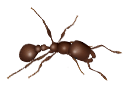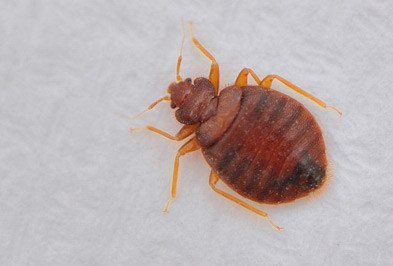Managing Pests in an Apartment Building
A Property Manager’s Guide to Pest Control
If there is one thing we can all agree on in the apartment industry, it’s that managing an apartment building is easy – it’s managing the people who live inside the building that is the true challenge. That statement is even more accurate when it comes to pest control issues in apartment buildings.
Pests thrive in apartment buildings because of easy access to food, water, shelter and the added bonus of adjoining walls and shared utilities. If resources become scarce in one unit, pests such as mice, cockroaches, and bed bugs can easily move from one unit to another. This presents a unique challenge to apartment building managers because it becomes increasingly crucial to manage the behaviors of residents. In order to find success with pest management in an apartment building, here are some of the best practices:
- Utilize your whole staff to accomplish your goals. If you are responsible for a small apartment building, you may be the manager, maintenance person and salesperson all rolled into one. In a larger complex though, multiple people may play these roles. The first step in implementing a successful integrated pest management (IPM) program, regardless of staff size, is to get all individuals on the same page – including the residents.
- Involve the residents. This may seem like the most challenging part of the plan, and we’re only on step two! At the end of the day though, resident involvement is absolutely crucial for success. Pests such as cockroaches and rodents thrive in unclean and cluttered environments. Educating residents on how they can prevent pests is a key step in your building’s IPM program.
- Work with your pest control provider to educate your staff and residents. What is the old saying – you don’t know what you don’t know? Setting the expectation that all residents and staff members are going to assist in the efforts to prevent pests is great in theory, but if they don’t know how to do that, it’ll never work. Consider working with your pest control company to create a formal training plan and/or distribute printed literature on the most common pests found in apartment buildings. Outside of pest information, these resources should include cleanliness expectations for each resident, steps to take if they suspect a pest and key warning signs of common pests. You should also ensure to notify your tenants that over-the-counter pesticides are not the answer. Over-the-counter pesticides are often used inaccurately, which may be dangerous to apartment dwellers. They also may counteract professional pesticides or even make a pest issue worse if they aren’t selecting the right products. For example, cockroaches will scatter to avoid a “bug bomb” and go deeper into hiding, and some species of ants will actually divide their colony when repellents are used to ensure survival.
- Uphold expectations. Once your staff and residents are trained, ensure they are doing what is asked of them by requiring inspections at scheduled intervals. Either utilize your pest control company to perform the inspections or designate a team of people who have been trained to spot the signs of pests or pest-conducive conditions. These inspections should require the designated individuals to physically go in each unit at least twice a year. They should be looking for actual pests, signs of pests such as feces, rub marks or gnaw marks, structural conditions that would be conducive to pests such as holes or gaps around external utilities, windows and doors, or internal conditions such as clutter, lack of cleanliness or improper food storage.
Cockroaches Are Your Worst Enemy
One of the biggest headaches for apartment managers and also one the biggest risks to resident health, is the German cockroach. German cockroaches are the most common species of cockroach found in apartment buildings. They are known to spread a number of diseases, risking your residents’ health and wellbeing. These diseases include E. coli, Salmonella spp., and Typhus. German cockroaches are also known to cause allergic reactions in children or worsen asthma symptoms. Below are some key characteristics of German cockroaches:
- Adults are pale brown to tan and a ½ inch long.
- Adults have wings and two dark stripes that run lengthwise just behind the head.
- German cockroaches have the highest reproductive potential of all structure-invading cockroaches, meaning they lay the most eggs and live the shortest amount of time.
- German cockroaches are usually found close to moisture and food (behind sinks, in cabinets, beneath kitchen equipment).
- If German cockroaches are found away from food sources, it signifies a very significant population.
What should residents do to prevent cockroaches in their apartments?
- Seal all food in plastic or glass containers.
- Wipe down all kitchen surfaces regularly.
- Remove trash frequently from unit.
- Throw away cardboard boxes and paper frequently (a favorite of cockroaches).
- Wash and store dishes immediately after use.
- Clean under utilities on a regular basis.
- Eliminate clutter.
- Report any moisture problems to management immediately.
- Report any signs of cockroaches to management immediately. Signs include:
- Droppings, which resemble pepper flakes or coffee grounds, on countertops, drawers, corners of the room/counter, along with the tops of doors or cracks/crevices.
- Egg capsules, which are dark, reddish-brown and usually appear near food and water, or empty egg cases.
- An unexplained “musty” odor.
A healthy home is one that is dry, clean, ventilated, safe, well-maintained and pest-free. Your residents have high standards when it comes to pests, and so should you. A little work on the front end can result in big returns! Contact us today for Holder’s Pest Solutions!
Managing Pests in an Apartment Building Serving
Houston
Beaumont | Conroe | Spring | Pasadena | The Woodlands | Richmond | Galveston
Baytown | Bryan | Cleveland | College Station | Cypress | Pearland | Sugar Land
Home » Managing Pests in an Apartment Building





